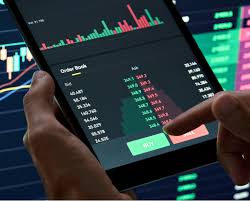
Mastering Trading Crypto Charts for Successful Investments
In the world of cryptocurrency trading, understanding the Trading Crypto Charts visit website charts is crucial for making informed investment decisions. Whether you are a novice trader or an experienced investor, mastering trading crypto charts can significantly improve your trading strategy and results. In this article, we will delve into the essentials of reading and analyzing these charts, the different types of charts available, fundamental and technical analysis, and some practical tips to enhance your trading skills.
Understanding Crypto Trading Charts
Crypto trading charts are graphical representations of the price movements of various cryptocurrencies over time. They depict the price behavior of these assets, allowing traders to analyze trends, identify patterns, and make predictions about future price movements. The primary purpose of these charts is to provide traders with a visual toolkit for making investment decisions. Understanding how to interpret these charts is key to developing a successful trading strategy.
Types of Crypto Charts
There are several types of crypto trading charts that traders use to analyze market data:
- Line Charts: The simplest form of chart, which plots the closing price of a cryptocurrency over time, connecting these points with a line. It gives a basic overview of price trends.
- Bar Charts: These charts provide more information than line charts by showing the open, high, low, and closing prices (OHLC) for each time period, allowing traders to see price volatility and trends more accurately.
- Candlestick Charts: Similar to bar charts, but they utilize colored «candlesticks» to depict the same OHLC data. The body of the candle indicates the price movement direction (green for an uptrend and red for a downtrend), while the wicks (or tails) indicate the high and low prices.

Fundamental vs. Technical Analysis
When using trading crypto charts, traders often rely on two primary types of analysis: fundamental and technical analysis.
Fundamental Analysis
Fundamental analysis focuses on the intrinsic value of a cryptocurrency by examining various economic factors, such as its utility, adoption, developer activity, and overall market conditions. By understanding the fundamentals of a cryptocurrency, traders can better assess its long-term potential, which may influence their trading strategy.
Technical Analysis
In contrast, technical analysis prioritizes historical price movements and trading volume. By analyzing past market data, traders attempt to forecast future price actions and trends. Technical analysis involves the use of various indicators and tools, such as moving averages, Relative Strength Index (RSI), and Fibonacci retracements, to identify potential entry and exit points. It’s a vital skill for traders looking to capitalize on short-term price fluctuations.
Key Indicators to Consider

To enhance your understanding of trading crypto charts, it’s essential to familiarize yourself with several key indicators:
- Moving Averages (MA): A MA smoothens price data to identify trends over a specified period. Common types include the Simple Moving Average (SMA) and the Exponential Moving Average (EMA). Traders often use crossovers between different MAs to signal potential buy or sell opportunities.
- Relative Strength Index (RSI): An oscillator that measures the speed and change of price movements, RSI helps traders identify overbought or oversold conditions in the market. A reading above 70 typically indicates overbought conditions, while a reading below 30 signals oversold conditions.
- Bollinger Bands: This indicator comprises a middle line (SMA) and two outer bands that show price volatility. When prices are close to the upper band, the asset may be overbought; when they’re near the lower band, the asset may be oversold.
Practical Tips for Analyzing Crypto Charts
Here are some practical tips to improve your crypto chart analysis skills:
- Start Simple: As a beginner, it’s best to start with basic line charts and gradually progress to more complex candlestick charts. Familiarizing yourself with the fundamental concepts will build a solid foundation for further learning.
- Practice Regularly: Continually analyze different crypto charts to practice your skills. The more you analyze, the more comfortable you will become with identifying trends and patterns.
- Set Alerts: Utilize trading platforms to set alerts for significant price movement or when a specific indicator reaches a predefined level. This can help you react swiftly to market changes.
- Keep Learning: The cryptocurrency market evolves rapidly, so ongoing education is essential. Participate in webinars, read articles, and consider joining trading communities to stay informed about new tools and strategies.
- Develop a Trading Plan: Always have a well-defined trading plan that outlines your strategies, risk management, and goals. This will help you maintain discipline and make informed decisions.
Conclusion
Mastering trading crypto charts is essential for making informed decisions in the ever-changing world of cryptocurrency. By understanding the different types of charts, employing both fundamental and technical analysis, and utilizing key indicators, traders can enhance their analysis skills and potentially achieve greater success in their investments. Remember, consistent practice, continuous learning, and developing a solid trading plan are vital components for becoming a proficient trader in the cryptocurrency market.

